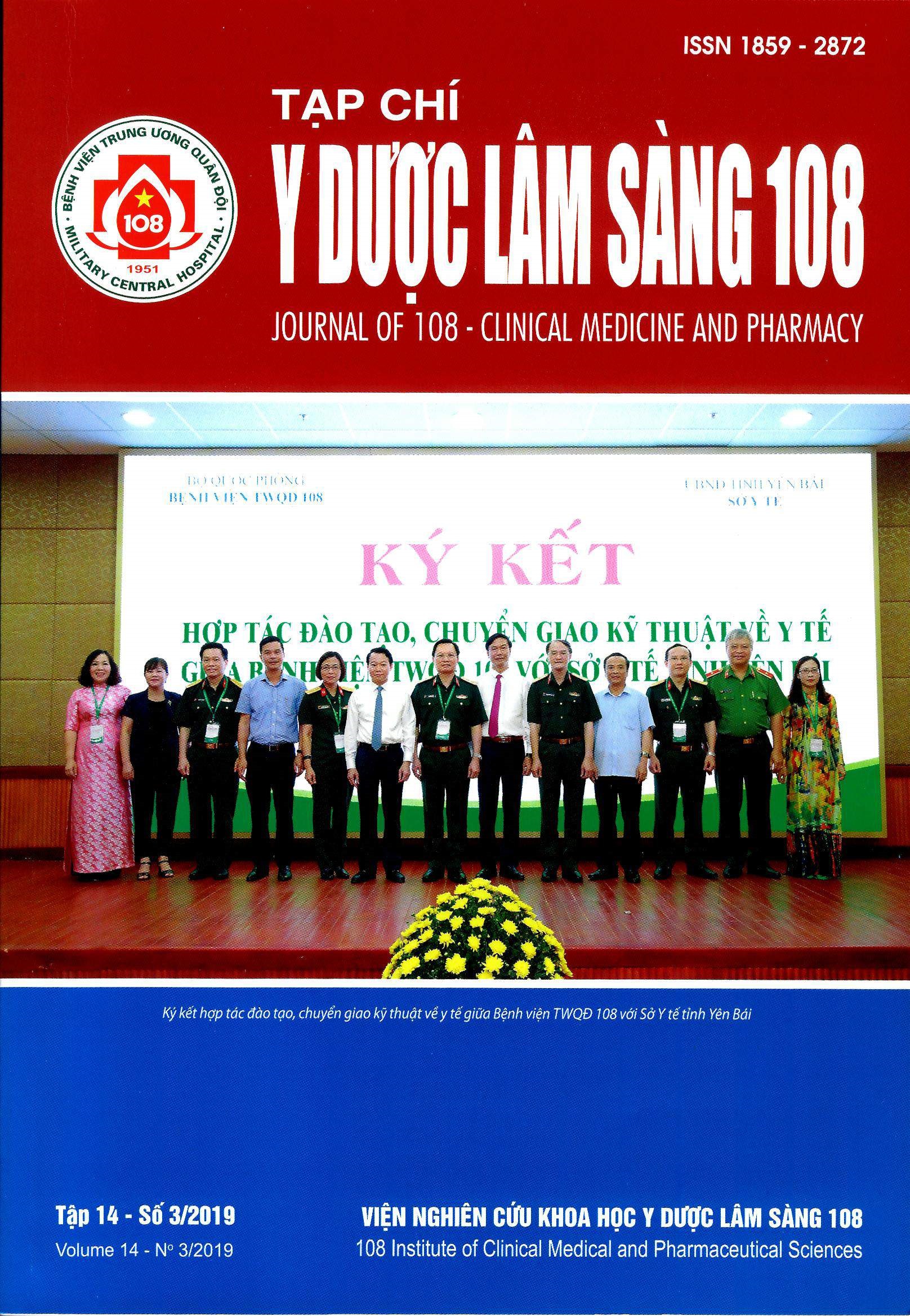The initial results of microsurgery of ruptured aneurysms of intracranial part of internal carotid artery via keyhole approaches
Main Article Content
Keywords
Abstract
Summary
Objective: To evaluate the results of microsurgery of ruptured aneurysms of intracranial part of internal carotid artery via keyhole approaches. Subject and method: This prospective study included 72 patients who were brought to Bach Mai Hospital for ruptured aneurysms of intracranial part of internal carotid artery, between September 2015 and September 2018. Result: the female/male ratio was 35/37, and the mean age was 55.98 ± 8.96 years. According to WFNS grading system, 90.28% patients were in clinical grade 1 and 2, 9.72% in grade 3; 8.33% hemorrhage in grade 1, 19.44% in grade 2, and 72.22% in grade 3 (Fisher scale). 48.61% aneurysms located on the anterior communicating artery and 16.67% on the middle cerebral artery, 29.17% on the posterior communicating artery, 4.17% on the anterior choroidal artery and 1.39% on the carotid terminus (bifurcation). During operation, the rate of intraoperative rupture was 8.33%. Post-operative complications were paralysis (4.17%) and cerebrospinal fluid leakage (2.78%). On the postoperative angiography, 2.78% patients with remnant aneurysms, and 1.39% with arterial occlusions. The good clinical outcome was 93.06%. Conclusion: These keyhole approaches seems to be safe and bring good results in patients with ruptured aneurysms of cerebral part of the internal carotid artery.
Keywords: Cerebral aneurysms, minimally invasive surgery, keyhole operations.
Article Details
References
2. Phạm Quỳnh Trang (2014) Kết quả điều trị vi phẫu thuật túi phình động mạch thông trước bằng đường mở sọ lỗ khóa trên ổ mắt. Luận văn tốt nghiệp Thạc sĩ Y học, Trường Đại học Y Hà Nội.
3. Caplan JM, Papadimitriou K, Yang W et al (2014) The minipterional craniotomy for anterior circulation aneurysms: initial experience with 72 patients. Neurosurgery. 10(2): 200-206.
4. Chalouhi N, Jabbour P, Ibrahim I et al (2013) Surgical treatment of ruptured anterior circulation aneurysms: Comparison of pterional and supraorbital keyhole approaches. Neurosurgery. 72(3): 437-441.
5. Chen L, Tian X, Zhang J (2009) Is eyebrow approach suitable for ruptured anterior circulation aneurysms on early stage: A prospective study at a single institude. Acta Neurochirurgica 151: 781-784.
6. Fischer G, Stadie A, Reisch R et al (2011) The keyhole concept in aneurysm surgery: Results of the past 20 years. Neurosurgery 68(1): 41-51.
7. Lan Q, Gong Z, Kang D et al (2006) Microsurgical experience with keyhole operations on intracranial aneurysms. Surg Neurol 66(1): 2-9
8. Mitchell P, Vindlacheruvu R, Mahmood K (2005) Supraorbital eyebrow minicraniotomy for anterior circulation aneurysms. Surgical Neurology 63: 47-51.
9. Yamahata H, Tokimura H, Tajitsu K et al (2014) Efficacy and safety of the pterional keyhole approach for the treatment of anterior circulation aneurysms. Neurosurg Rev 37: 629-636.
 ISSN: 1859 - 2872
ISSN: 1859 - 2872
